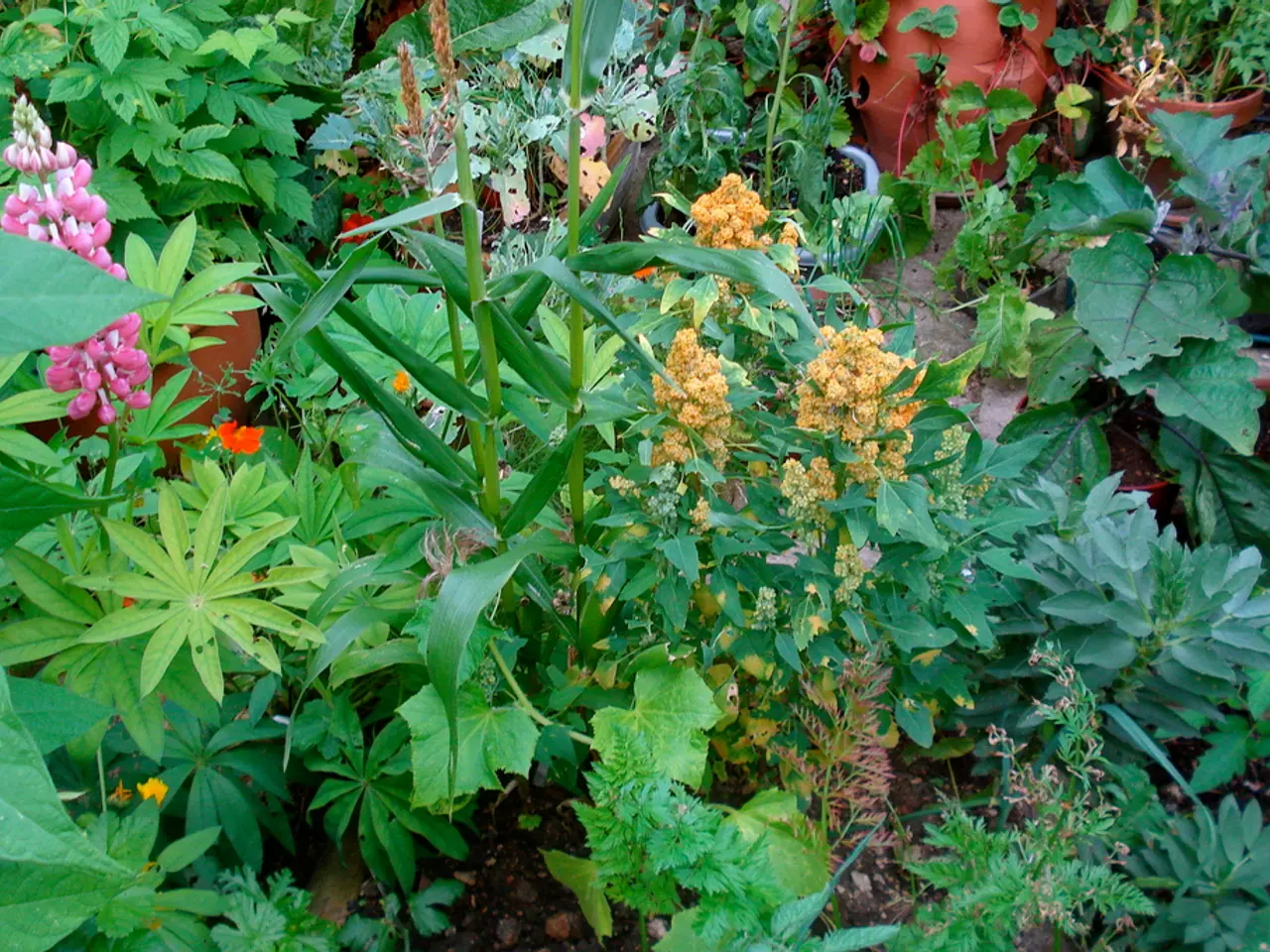Container-Friendly Pollinator Gardens: Explore 5 Suitable Plants for Small Spaces and Pots
In the quest to add a splash of color and attract beneficial pollinators like bees and butterflies to small spaces, a potted pollinator garden is an excellent solution. Here's a guide on how to create a thriving, compact pollinator haven.
Firstly, containers for small spaces should be compact, provide support, and have good drainage. This ensures that the plants' roots have room to grow while maintaining the necessary conditions for optimal growth.
A potted pollinator garden can be filled with pollinator-friendly items such as bee houses, butterfly feeders, and water features. However, the main focus should be on compact, nectar-rich plants that support a variety of pollinators, especially smaller beneficial insects like native bees and hoverflies.
Ideal small plants for a potted pollinator garden include Sweet Alyssum (Lobularia maritima), a low-growing annual with tiny white, pink, or purple flowers that bloom abundantly from spring through fall. Coral Bells (Heuchera spp.) are mounding perennials about 2 feet tall with bell-shaped flowers in early spring that attract hummingbirds, butterflies, and bees. Catmint (Nepeta spp.), compact perennials around 2 feet tall with lavender-blue or pink tubular flowers, are also a great choice.
When selecting plants, consider their size, bloom duration, diversity, and native species. Choose plants that stay small enough to thrive in pots but produce clustered flowers for ample nectar. Plants with long bloom seasons provide consistent food resources. Include a mix of flower shapes and colors to attract a range of pollinators. Prefer native plants where possible, as they often support local pollinators better and require less maintenance.
For a well-rounded potted pollinator garden, assemble a combination of low-growing, nectar-rich annuals and compact perennials such as Sweet Alyssum, Coral Bells, and Catmint to maximize pollinator visitation and support.
Milkweed, a pollinator-friendly plant, can also grow in containers. It requires sandy potting soil and a container with a diameter of ideally 16 inches (40cm) or more and a good drainage hole.
Dwarf coneflower varieties such as 'Lilliput Dwarf', 'Prima Ginger', 'Pixie Meadowbrite' and 'Guatemala Gold' are suitable for compact spaces. Dwarf bee balms are also an excellent choice, with notable examples like 'Petite Delight' and 'Pardon My Purple'.
Lavender is another good choice for a small space pollinator garden due to its ability to attract bees and butterflies. There are several dwarf lavender varieties tailored for compact spaces, including 'Dwarf Munstead', 'Compacta', 'Nana Alba', 'Little Lady', 'Wee One', and 'Thumbelina Leigh'.
Yarrow (Achillea millefolium) is a dazzling pollinator plant in small spaces, while Dwarf Bee Balm (Monarda) is an ideal small space pollinator plant. These dwarf coneflowers are likely to reach 12-15in (30-40cm) tall.
Lastly, containers for dwarf bee balms should be at least five gallons in size, and they need to be placed in the sunniest spot.
By following these guidelines, you can create a thriving potted pollinator garden that adds color, charm, and benefits to your small space. Happy gardening!
[1] https://www.gardeningknowhow.com/garden-how-to/beneficial/creating-a-potted-pollinator-garden.htm [2] https://www.gardeningknowhow.com/garden-how-to/beneficial/pollinator-garden-plants.htm [3] https://www.gardeningknowhow.com/garden-how-to/beneficial/pollinator-garden-plants-for-small-spaces.htm [4] https://www.gardeningknowhow.com/garden-how-to/beneficial/choosing-plants-for-a-pollinator-garden.htm [5] https://www.gardeningknowhow.com/garden-how-to/beneficial/native-plants-for-pollinators.htm
- To further promote a pollinator-friendly lifestyle, consider adding home-and-garden elements like dwarf lavender, Dwarf coneflower varieties, and dwarf bee balms to your potted pollinator garden.
- Maintaining a compact pollinator garden isn't just about the plants; ensure your containers are suitable for these nectar-rich plants, such as five-gallon pots for dwarf bee balms.




